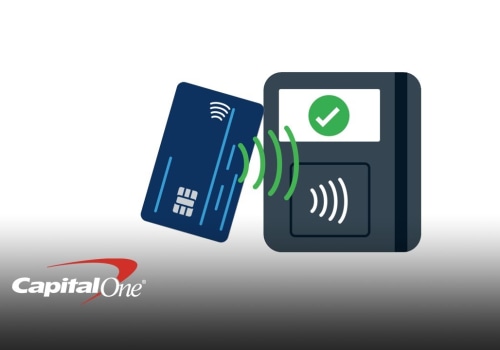The rise of online shopping has been nothing short of remarkable in recent years. With more and more people turning to the internet to purchase their goods and services, it's no surprise that the share of online shopping in total retail sales has grown exponentially. But what exactly does this share look like? How has it changed over time? In this article, we'll take a look at the latest online shopping statistics to understand the share of online shopping in total retail sales. We'll look at the growth of e-commerce over the past few years, as well as the factors driving its rapid growth. We'll also explore the impact of online shopping on traditional retail stores, and what this means for consumers and businesses alike.
Online Shopping Statistics:
Understanding the Share of Online Shopping in Total Retail SalesIn recent years, the growth of eCommerce has become a primary driver of the retail industry.Consumers are increasingly opting for the convenience of online shopping, leading to drastic changes in the way people shop. This article explores the current share of online shopping in total retail sales, as well as key insights into online shopping trends. According to the US Department of Commerce, eCommerce accounted for 11.8% of total retail sales in 2018. This figure is expected to grow to 14.5% by 2021. Other countries have seen similar growth in their online shopping share of total retail sales, such as the UK (20.1%), Germany (13.4%) and Australia (9.2%).The trend is particularly pronounced in certain industries and categories. In apparel, for instance, online sales now account for 22% of total sales, compared to just 8.3% in 2013. Similarly, online sales make up a much larger share of furniture and home furnishing sales (15.7%) than they did in 2013 (7%).These figures demonstrate that there are significant differences between different types of shoppers and products when it comes to the share of online shopping in total retail sales. For instance, younger shoppers tend to prefer online shopping more than their older counterparts, and certain product categories are more popular online than others. The growth of eCommerce can be attributed to various factors.
For one thing, greater access to high-speed internet and mobile devices has made online shopping more accessible and convenient for consumers. In addition, retailers have invested heavily in eCommerce technology, such as customer service platforms, payment systems and delivery services. The COVID-19 pandemic has had a profound impact on online shopping trends. With physical stores closed, people have increasingly turned to online channels for their shopping needs. This shift has been accelerated by retailers offering discounts and promotions to entice customers to shop online. In response to these changes, retailers have had to adapt quickly to stay competitive in the digital space.
Many have launched new digital initiatives such as curbside pickup, contactless delivery, virtual customer service and online payment options. These changes are intended to improve the customer experience and make it easier for shoppers to purchase products from home. These changes have implications for both shoppers and retailers alike. Customers now have more choice in terms of pricing, delivery options and customer service experiences. Retailers also need to invest more resources into digital marketing and eCommerce technology in order to remain competitive. In conclusion, online shopping has become a major force in the retail industry over the past decade.
The share of online shopping in total retail sales is expected to continue growing in the future, driven by factors such as increased access to technology and the effects of the COVID-19 pandemic. Retailers will need to adapt quickly in order to capitalize on these changes and remain competitive.
Key Insights
As online shopping continues to grow, the retail industry is adapting to the changing consumer landscape. Understanding online shopping trends and key insights can help businesses capitalize on the opportunities presented by the eCommerce boom. Here, we explore some of the key insights into online shopping trends, such as customer retention, marketing strategies, and technology trends.Customer Retention
Retaining customers is an important part of any business’s success, and it is no different for online retailers.Companies need to focus on providing an excellent customer experience in order to keep customers coming back. To increase customer loyalty, businesses should focus on providing personalized recommendations, offering rewards programs, and utilizing targeted marketing strategies.
Marketing Strategies
A successful marketing strategy for online retailers should include a combination of traditional methods (e.g. television and radio advertising) and modern tactics (e.g. social media campaigns).Additionally, businesses should consider leveraging data-driven insights to better understand their target customers and tailor their message accordingly.
Technology Trends
The use of technology is becoming increasingly important in the eCommerce space. Businesses should stay up-to-date with the latest developments in order to remain competitive in the market. For example, artificial intelligence (AI) can be used to personalize product recommendations, while mobile apps can provide a more convenient shopping experience for customers.Online Shopping Trends
Analyzing key trends in online shopping can provide valuable insights into consumer preferences and behaviors.There are several segments of the online shopping industry, including apparel, home goods, electronics, and more. Each of these segments has its own unique trends and characteristics that influence the way shoppers interact with online stores. Additionally, there are certain demographic factors that influence the way consumers shop online. For example, younger generations are more likely to opt for online shopping than older generations.
Understanding the share of online shopping in total retail sales is also critical for businesses to consider when making decisions about their business model and marketing strategy. By tracking key metrics such as market size, growth rate, average order value, and customer lifetime value, businesses can gain an understanding of the potential for success in the online retail space. Additionally, understanding market trends can help businesses better target the right demographic segments and tailor their product offerings accordingly. When considering key trends in online shopping, it’s important to also think about the development of new technologies that are driving changes in consumer behavior.
Technologies such as mobile shopping, social commerce, and voice commerce are creating new opportunities for businesses to reach their customers. Additionally, advancements in artificial intelligence (AI) and machine learning (ML) are helping businesses to better understand their customers and personalize their offerings accordingly. Overall, understanding the share of online shopping in total retail sales and key trends in online shopping can be incredibly valuable for businesses looking to capitalize on the growth of eCommerce. By leveraging data-driven insights and incorporating new technologies into their strategies, businesses can increase their chances of success in the competitive retail space. This article has highlighted the increasing share of online shopping in total retail sales, and the key insights into how this trend is changing the way people shop. It is important for retailers to understand these trends in order to stay competitive in the rapidly changing eCommerce environment.
Retailers need to adapt their strategies to take advantage of the potential opportunities this shift presents, such as improved customer service, more targeted marketing, and increased convenience for customers. On the other hand, shoppers also benefit from the increasing availability of online shopping options, as it allows for more convenience and control over their shopping experience. Overall, understanding online shopping trends is important for both retailers and shoppers alike. It can help retailers stay ahead of the competition by adapting their strategies to capitalize on the growth of eCommerce, while shoppers can enjoy increased convenience and control over their shopping experience.







